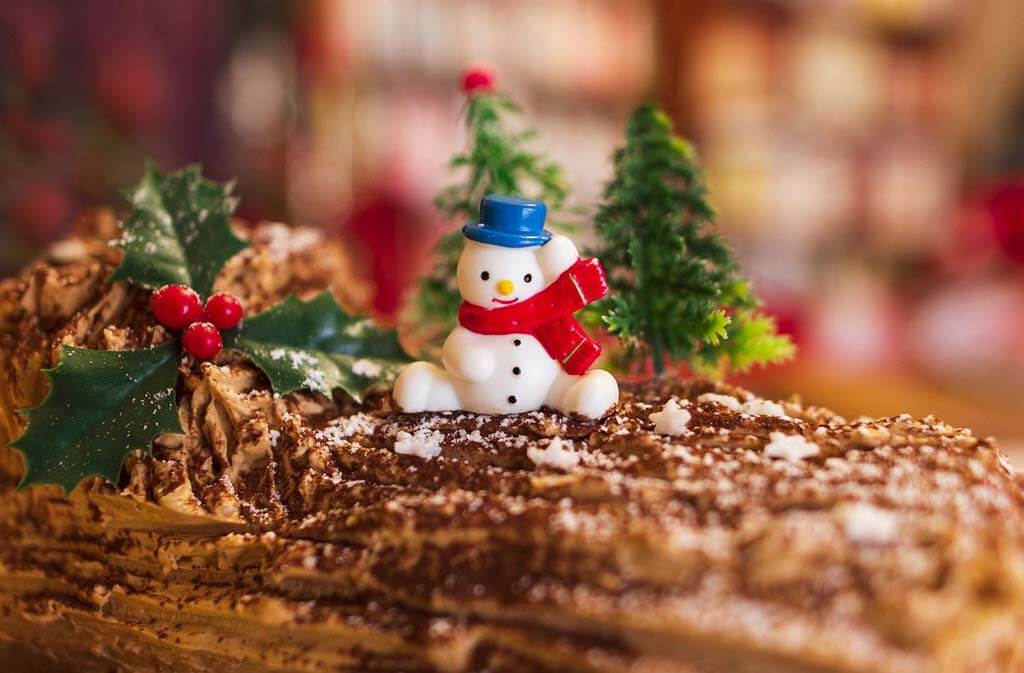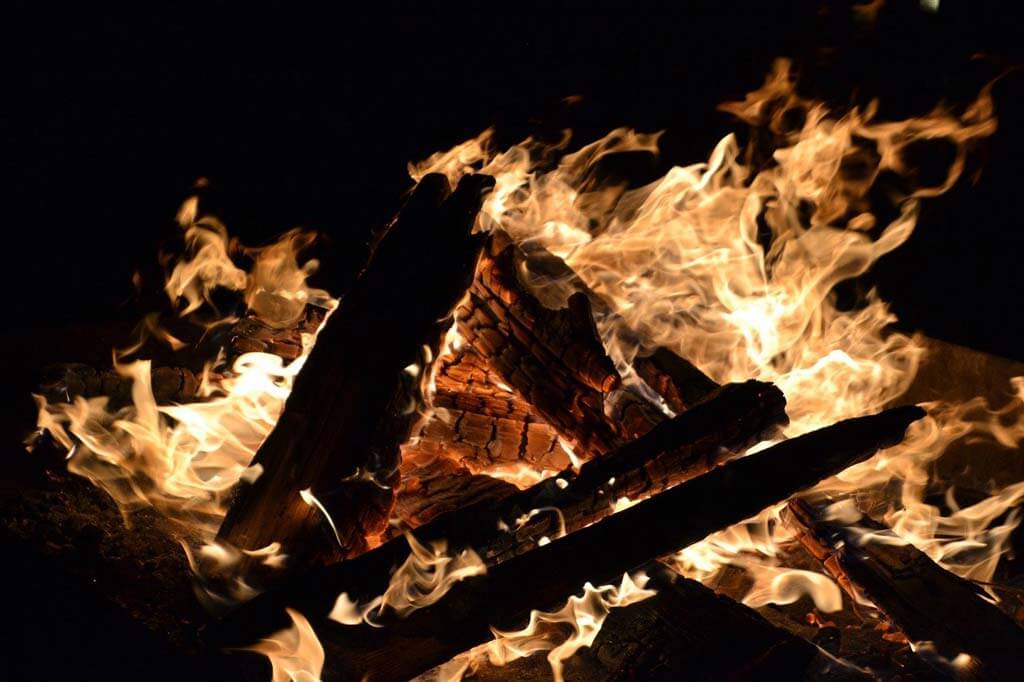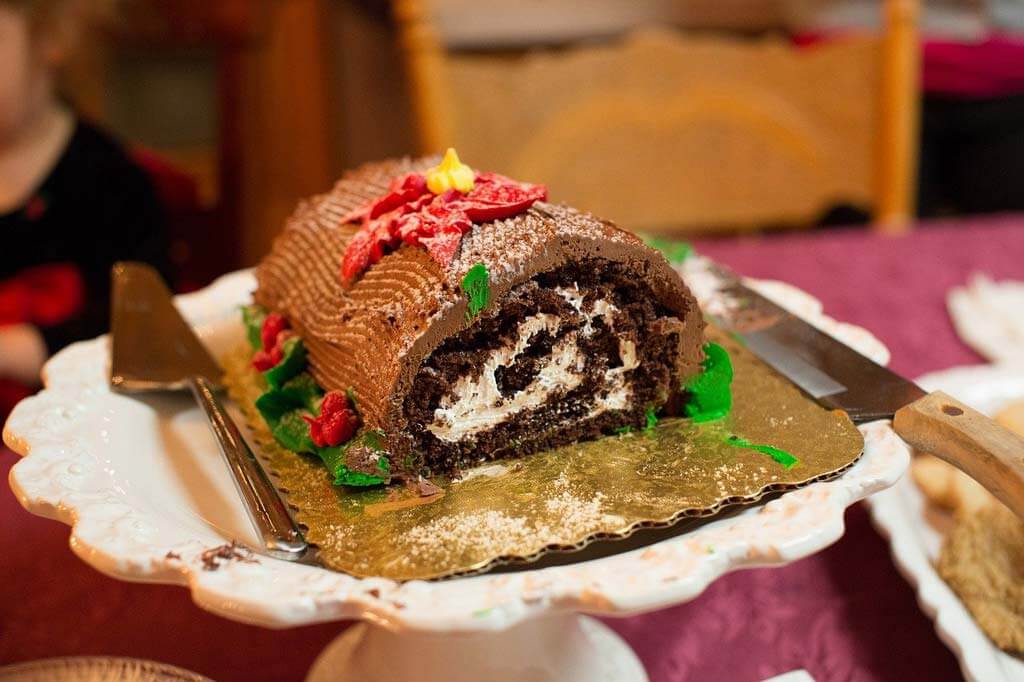Article written by Elisa - Travel Writer & Local in France
This article may contain compensated links. Please read disclaimer for more info.
The Bûche de Noël, or Christmas Log cake, is one of the main Christmas traditions in France. La bûche de Noël is the typical dessert of a French Christmas dinner or the Christmas meal on 25 December.
What are the origins of this delicious Christmas cake in France? Below, is the history of bûche de noël, the main ingredients, and traditions around the Christmas log cake.

History of Bûche de Noël (The Yule Log Burning)

The bûche de Noël is one of the oldest French Christmas traditions. The bûche de Noël origin dates back to the Celts!
In the days of the Celts, the winter solstice (Yule Festival) was celebrated with grand ceremonies. On the shortest day of the year, there was the yule log burning to celebrate the promise of the return of the sun in spring.
The Druids favored an oak or fruit tree log because these woods are perfect for making sparks. While the yule log was consuming, an offering was made to the gods to ask for a good harvest for the year to come. The fire was also supposed to ward off evil spirits.
In the Middle Ages, the tradition of the yule log burning continued. In Eastern France, a whole ritual involving all the household members accompanied the lighting of the log. In Alsace, for example, families let the yule log burning in the stove on Christmas Eve, and kept the embers and then the ashes. The embers protected the house from fires, and the ashes were scattered in the spring on the fields for a good harvest.
Over the years, and with the disappearance of chimneys, the rites associated with lighting the yule log have gradually disappeared – at least in the French cities.
Bûche de Noël Cake – the Most Popular French Christmas Dessert

We do not know with certainty who invented this famous Christmas cake in France and where. However, everybody seems to agree that the bûche de Noël cake was created in the 19th century, although its popularization in France did not come until after the Liberation, in 1945-1950.
The traditional yule log cake consists of a sponge cake, generally baked in a large, shallow Swiss roll pan, on which you spread flavored buttercream (coffee, chocolate or chestnut cream). Then, the dough is rolled up into a log shape before covering it with a thin layer of buttercream.
The bûche de Noël cake is often served with one end cut off and set atop the cake, or protruding from its side to resemble a chopped-off branch. A bark-like texture is often made by dragging a fork through the icing and powdered sugar sprinkled to resemble snow.
It is common to decorate this French Christmas cake with small objects in sugar or plastic evoking the forest, from where the logs come.
Today, the bûches de Noël are more creative, especially in the big cities like Paris. Famous pastry chefs like to compete between them creating beautiful bûches de Noël that come in many flavors and colors, decorating the shop windows since the first days of December. With so many wonderful yule log cakes on display, it is hard to wait until Chrismas to taste them!
If you are invited to a Christmas dinner or Christmas meal in France, bringing a bûche de Noël from a reputed (not necessarily fancy) pastry shop will be much appreciated. However, traditional households prefer this French Christmas cake homemade.
And there you have it, the bûche de Noël history, what’s inside, and the traditions and customs related to the Christmas log cake in France. Now you just need to try one!
